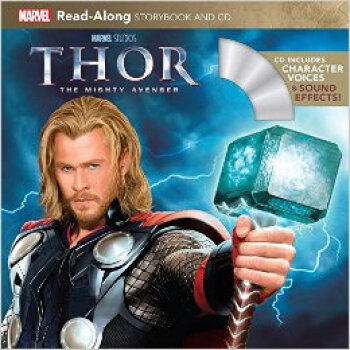![Single Variable Calculus: Early Transcendentals (International Metric Edition) 英文原版 [精装]](https://pic.tinynews.org/19172452/rBEHZ1BGp_oIAAAAAAAxq3Z3qXEAABB1AKdAQkAADHD888.jpg)

具体描述
内容简介
James Stewart's CALCULUS: EARLY TRANSCENDENTALS texts are widely renowned for their mathematical precision and accuracy, clarity of exposition, and outstanding examples and problem sets. Millions of students worldwide have explored calculus through Stewart's trademark style, while instructors have turned to his approach time and time again. In the Seventh Edition of SINGLE VARIABLE CALCULUS: EARLY TRANSCENDENTALS, Stewart continues to set the standard for the course while adding carefully revised content. The patient explanations, superb exercises, focus on problem solving, and carefully graded problem sets that have made Stewart's texts best-sellers continue to provide a strong foundation for the Seventh Edition. From the most unprepared student to the most mathematically gifted, Stewart's writing and presentation serve to enhance understanding and build confidence.CourseSmart goes beyond traditional expectations–providing instant, online access to the textbooks and course materials you need and at a lower cost to your students. To request an electronic sample of this Cengage Learning title, go to: www.coursesmart.com/instructors.
目录
Diagnostic Tests.A Preview of Calculus.
1. FUNCTIONS AND MODELS.
Four Ways to Represent a Function. Mathematical Models: A Catalog of Essential Functions. New Functions from Old Functions. Graphing Calculators and Computers. Exponential Functions. Inverse Functions and Logarithms. Review. Principles of Problem Solving.
2. LIMITS AND DERIVATIVES.
The Tangent and Velocity Problems. The Limit of a Function. Calculating Limits Using the Limit Laws. The Precise Definition of a Limit. Continuity. Limits at Infinity; Horizontal Asymptotes. Derivatives and Rates of Change. Writing Project: Early Methods for Finding Tangents. The Derivative as a Function. Review. Problems Plus.
3. DIFFERENTIATION RULES.
Derivatives of Polynomials and Exponential Functions. Applied Project: Building a Better Roller Coaster. The Product and Quotient Rules. Derivatives of Trigonometric Functions. The Chain Rule. Applied Project: Where Should a Pilot Start Descent? Implicit Differentiation. Derivatives of Logarithmic Functions. Rates of Change in the Natural and Social Sciences. Exponential Growth and Decay. Related Rates. Linear Approximations and Differentials. Laboratory Project: Taylor Polynomials. Hyperbolic Functions. Review. Problems Plus.
4. APPLICATIONS OF DIFFERENTIATION.
Maximum and Minimum Values. Applied Project: The Calculus of Rainbows. The Mean Value Theorem. How Derivatives Affect the Shape of a Graph. Indeterminate Forms and L'Hospital's Rule. Writing Project: The Origins of l'Hospital's Rule. Summary of Curve Sketching. Graphing with Calculus and Calculators. Optimization Problems. Applied Project: The Shape of a Can. Newton's Method. Antiderivatives. Review. Problems Plus.
5. INTEGRALS.
Areas and Distances. The Definite Integral. Discovery Project: Area Functions. The Fundamental Theorem of Calculus. Indefinite Integrals and the Net Change Theorem. Writing Project: Newton, Leibniz, and the Invention of Calculus. The Substitution Rule. Review. Problems Plus.
6. APPLICATIONS OF INTEGRATION.
Areas between Curves. Volume. Volumes by Cylindrical Shells. Work. Average Value of a Function. Applied Project: Where to Sit at the Movies. Review. Problems Plus.
7. TECHNIQUES OF INTEGRATION.
Integration by Parts. Trigonometric Integrals. Trigonometric Substitution. Integration of Rational Functions by Partial Fractions. Strategy for Integration. Integration Using Tables and Computer Algebra Systems. Discovery Project: Patterns in Integrals. Approximate Integration. Improper Integrals. Review. Problems Plus.
8. FURTHER APPLICATIONS OF INTEGRATION.
Arc Length. Discovery Project: Arc Length Contest. Area of a Surface of Revolution. Discovery Project: Rotating on a Slant. Applications to Physics and Engineering. Discovery Project: Complementary Coffee Cups. Applications to Economics and Biology. Probability. Review. Problems Plus.
9. DIFFERENTIAL EQUATIONS.
Modeling with Differential Equations. Direction Fields and Euler's Method. Separable Equations. Applied Project: Which is Faster, Going Up or Coming Down? Models for Population Growth. Applied Project: Calculus and Baseball. Linear Equations. Predator-Prey Systems. Review. Problems Plus.
10. PARAMETRIC EQUATIONS AND POLAR COORDINATES.
Curves Defined by Parametric Equations. Laboratory Project: Families of Hypocycloids. Calculus with Parametric Curves. Laboratory Project: Bezier Curves. Polar Coordinates. Areas and Lengths in Polar Coordinates. Conic Sections. Conic Sections in Polar Coordinates. Review. Problems Plus.
11. INFINITE SEQUENCES AND SERIES.
Sequences. Laboratory Project: Logistic Sequences. Series. The Integral Test and Estimates of Sums. The Comparison Tests. Alternating Series. Absolute Convergence and the Ratio and Root Tests. Strategy for Testing Series. Power Series. Representations of Functions as Power Series. Taylor and Maclaurin Series. Laboratory Project: An Elusive Limit. Writing Project: How Newton Discovered the . Binomial Series. Applications of Taylor Polynomials. Applied Project: Radiation from the Stars. Review. Problems Plus.
APPENDIXES.
A. Numbers, Inequalities, and Absolute Values.
B. Coordinate Geometry and Lines.
C. Graphs of Second-Degree Equations.
D. Trigonometry.
E. Sigma Notation.
F. Proofs of Theorems.
G. The Logarithm Defined as an Integral.
H. Complex Numbers.
I. Answers to Odd-Numbered Exercises.
精彩书摘
Diagnostic Tests. A Preview of Calculus. 1. FUNCTIONS AND MODELS. Four Ways to Represent a Function. Mathematical Models: A Catalog of Essential Functions. New Functions from Old Functions. Graphing Calculators and Computers. Exponential Functions. Inverse Functions and Logarithms. Review. Principles of Problem Solving. 2. LIMITS AND DERIVATIVES. The Tangent and Velocity Problems. The Limit of a Function. Calculating Limits Using the Limit Laws. The Precise Definition of a Limit. Continuity. Limits at Infinity; Horizontal Asymptotes. Derivatives and Rates of Change. Writing Project: Early Methods for Finding Tangents. The Derivative as a Function. Review. Problems Plus. 3. DIFFERENTIATION RULES. Derivatives of Polynomials and Exponential Functions. Applied Project: Building a Better Roller Coaster. The Product and Quotient Rules. Derivatives of Trigonometric Functions. The Chain Rule. Applied Project: Where Should a Pilot Start Descent? Implicit Differentiation. Derivatives of Logarithmic Functions. Rates of Change in the Natural and Social Sciences. Exponential Growth and Decay. Related Rates. Linear Approximations and Differentials. Laboratory Project: Taylor Polynomials. Hyperbolic Functions. Review. Problems Plus. 4. APPLICATIONS OF DIFFERENTIATION. Maximum and Minimum Values. Applied Project: The Calculus of Rainbows. The Mean Value Theorem. How Derivatives Affect the Shape of a Graph. Indeterminate Forms and L'Hospital's Rule. Writing Project: The Origins of l'Hospital's Rule. Summary of Curve Sketching. Graphing with Calculus and Calculators. Optimization Problems. Applied Project: The Shape of a Can. Newton's Method. Antiderivatives. Review. Problems Plus. 5. INTEGRALS. Areas and Distances. The Definite Integral. Discovery Project: Area Functions. The Fundamental Theorem of Calculus. Indefinite Integrals and the Net Change Theorem. Writing Project: Newton, Leibniz, and the Invention of Calculus. The Substitution Rule. Review. Problems Plus. 6. APPLICATIONS OF INTEGRATION. Areas between Curves. Volume. Volumes by Cylindrical Shells. Work. Average Value of a Function. Applied Project: Where to Sit at the Movies. Review. Problems Plus. 7. TECHNIQUES OF INTEGRATION. Integration by Parts. Trigonometric Integrals. Trigonometric Substitution. Integration of Rational Functions by Partial Fractions. Strategy for Integration. Integration Using Tables and Computer Algebra Systems. Discovery Project: Patterns in Integrals. Approximate Integration. Improper Integrals. Review. Problems Plus. 8. FURTHER APPLICATIONS OF INTEGRATION. Arc Length. Discovery Project: Arc Length Contest. Area of a Surface of Revolution. Discovery Project: Rotating on a Slant. Applications to Physics and Engineering. Discovery Project: Complementary Coffee Cups. Applications to Economics and Biology. Probability. Review. Problems Plus. 9. DIFFERENTIAL EQUATIONS. Modeling with Differential Equations. Direction Fields and Euler's Method. Separable Equations. Applied Project: Which is Faster, Going Up or Coming Down? Models for Population Growth. Applied Project: Calculus and Baseball. Linear Equations. Predator-Prey Systems. Review. Problems Plus. 10. PARAMETRIC EQUATIONS AND POLAR COORDINATES. Curves Defined by Parametric Equations. Laboratory Project: Families of Hypocycloids. Calculus with Parametric Curves. Laboratory Project: Bezier Curves. Polar Coordinates. Areas and Lengths in Polar Coordinates. Conic Sections. Conic Sections in Polar Coordinates. Review. Problems Plus. 11. INFINITE SEQUENCES AND SERIES. Sequences. Laboratory Project: Logistic Sequences. Series. The Integral Test and Estimates of Sums. The Comparison Tests. Alternating Series. Absolute Convergence and the Ratio and Root Tests. Strategy for Testing Series. Power Series. Representations of Functions as Power Series. Taylor and Maclaurin Series. Laboratory Project: An Elusive Limit. Writing Project: How Newton Discovered the . Binomial Series. Applications of Taylor Polynomials. Applied Project: Radiation from the Stars. Review. Problems Plus. APPENDIXES. A. Numbers, Inequalities, and Absolute Values. B. Coordinate Geometry and Lines. C. Graphs of Second-Degree Equations. D. Trigonometry. E. Sigma Notation. F. Proofs of Theorems. G. The Logarithm Defined as an Integral. H. Complex Numbers. I. Answers to Odd-Numbered Exercises.,前言/序言
用户评价
这本教材的排版和印刷质量简直是一场灾难,纸张薄得像蝉翼,油墨总是洇开,尤其是那些复杂的积分符号和希腊字母,看得人头疼欲裂。我记得有一次尝试在图书馆里对着强光看那些微分方程的推导过程,结果眼花了,硬是没看清一个公式的上下标。更别提它的国际公制版本,有些单位的标注方式和我在课堂上习惯的完全不同,让人在做习题时总要多花几秒钟去适应这种“国际化”的表达。说实话,作为一个需要反复查阅和做笔记的学习者来说,这种低劣的物理实体体验,极大地削弱了学习微积分本身的挑战性。我真希望出版商能在这方面多投入一点成本,毕竟这是一本核心的数学参考书,不该如此敷衍了事。我的书架上放着一堆高阶物理和工程学的书,它们的印刷质量都远超此书,让人不禁怀疑这本被寄予厚望的微积分教材,到底经历了怎样的成本控制环节才以这种面貌示人。
评分这本书的国际度量衡版本在定价上显得极其不合理。考虑到其印刷质量的粗糙程度,以及其内容在某些关键概念解释上的不足,它所要求的价格实在高得离谱。我清楚地知道出版行业的成本构成,但面对一本在国际市场上流通,且在许多大学课程中被强制要求购买的教材,其性价比之低,令人咋舌。每一次翻开它,我总会想到那些为了凑齐教材费而省吃俭用的同学。更讽刺的是,这本书的许多核心内容,在许多更新的、排版更精良的替代品中都能找到,而且价格可能只是其三分之一。这种定价策略,让学习过程本身就充满压力的学生群体,又增添了一份不必要的经济负担,这对于一本旨在普及高等数学知识的工具书来说,实在是一种商业上的不负责任。
评分这本书的习题设计实在过于“精英化”了,充满了各种反直觉和需要灵光一现才能解决的怪题。我理解数学学习需要挑战,但挑战和折磨之间只有一线之隔。很多基础练习题的步骤跳跃得非常快,仿佛作者默认读者已经对每一步中间的代数操作了如指掌,完全没有提供足够的“脚手架”。我记得有一道关于泰勒展开式的题目,解答过程直接从一个复杂的函数形式跳跃到了一个简化的连分式,中间缺失了至少五六步关键的因式分解和配方,我花了整整一个下午去逆向推导,才勉强还原出完整的路径。对于那些初次接触微积分,或者数学基础相对薄弱的同学来说,这本书带来的挫败感可能会远大于启发。它更像是为已经掌握了扎实预备知识的“学霸”准备的“挑战手册”,而不是一本普适性的入门教材。
评分我是在一个时间非常紧张的学期末接触到这本书的,当时需要快速掌握多变量微积分的基础,而这本书的章节组织逻辑对我来说简直是迷宫。它似乎有一种魔力,总能把最关键的定理和最需要的例题分隔得非常遥远。比如,当你刚学完一个抽象的向量场概念,紧接着出现的习题却要求你用一个半小时前才草草带过的表面积分技巧去解一个看起来无比复杂的实际问题。这种脱节感让我感觉自己像在学一门“孤立知识点”的集合,而不是一门连贯的数学学科。我不得不频繁地跳跃式阅读,前后翻阅几十页才能把一个概念的来龙去脉串起来,这无疑极大地拖慢了我的学习进度,尤其是在期末复习阶段,效率低下带来的焦虑感是难以言喻的。
评分这本书的国际公制版本,说实话,在某些理论解释上显得有些过于“保守”或“克制”了。它似乎更侧重于形式化的推导和严格的证明,而在直观的几何意义或实际应用场景的阐述上略显不足。举个例子,当它介绍拉格朗日乘数法时,重点完全放在了梯度向量的共线性证明上,但对于“沿着约束曲面寻找极值点”这种几何直觉的描述,却是寥寥数语带过。我发现,我不得不去翻阅其他更侧重于工程应用的教材或在线资源,来弥补这种在“理解其为何如此”上的空缺。一本好的微积分教材,理应在严谨性与直观性之间找到完美的平衡点,但这本书显然更偏向于前者,使得那些希望将数学知识应用于物理或工程领域的读者,会感到理论和实践之间存在一道鸿沟。
相关图书
本站所有内容均为互联网搜索引擎提供的公开搜索信息,本站不存储任何数据与内容,任何内容与数据均与本站无关,如有需要请联系相关搜索引擎包括但不限于百度,google,bing,sogou 等
© 2025 book.tinynews.org All Rights Reserved. 静思书屋 版权所有

![Market Wizards: Interviews with Top Traders 市场奇才:访谈顶级交易员 [平装] pdf epub mobi 电子书 下载](https://pic.tinynews.org/19198545/rBEDilAHlgoIAAAAAAAqzbfQioUAAEHsgBuv80AACrl242.jpg)
![Fact and Fiction[现实与小说] [平装] pdf epub mobi 电子书 下载](https://pic.tinynews.org/19245260/rBEGFk-o45oIAAAAAABBkCalxPkAAA5MgBt4NUAAEGo495.jpg)
![This Is San Francisco [精装] [3岁及以上] pdf epub mobi 电子书 下载](https://pic.tinynews.org/19273649/rBEIC1AovxYIAAAAAABDF5diRCwAAFfQwFDo2kAAEMv993.jpg)
![Never-Bored Kid Book 2, Ages 7-8 [平装] [7岁及以上] pdf epub mobi 电子书 下载](https://pic.tinynews.org/19275980/rBEHalA8qUsIAAAAAABGAmAgvZAAAA0wgAjC44AAEYa310.jpg)
![Legend 英文原版 [平装] pdf epub mobi 电子书 下载](https://pic.tinynews.org/19287807/rBEhWVJbc4kIAAAAAAB8rhhehaYAAEHAAJLWgwAAHzG714.jpg)
![The Principles of Morals and Legislation [平装] pdf epub mobi 电子书 下载](https://pic.tinynews.org/19317535/rBEhUlJbiH0IAAAAAAA0KLP1YwUAAEHAwOCVhkAADRA589.jpg)
![Green Lantern Sinestro Corps War [平装] pdf epub mobi 电子书 下载](https://pic.tinynews.org/19375050/rBEhUlJbnosIAAAAAAB5QrwEWIAAAEHdAAd8uUAAHla422.jpg)
![Girlz Rock: Netball Showdown 摇滚女孩系列:篮球胜负赛 [平装] [6岁及以上] pdf epub mobi 电子书 下载](https://pic.tinynews.org/19455101/rBEhVlL4oFAIAAAAABF6ks1kGMMAAIfSwNN5s8AEXqq168.jpg)
![Lonely Planet: Africa (Travel Guide) 孤独星球旅行指南:非洲 [平装] pdf epub mobi 电子书 下载](https://pic.tinynews.org/19455429/rBEhWlJuC-4IAAAAAACw9ktssJYAAErQAJoRwoAALEO348.jpg)
![The Invisible Dog and The Sheep Pig 隐形狗 & 牧羊猪 [平装] [8-12岁] pdf epub mobi 电子书 下载](https://pic.tinynews.org/19475698/rBEhVlMP7PYIAAAAAAEb9WLzsIQAAJTjQH9Hv8AARwN560.jpg)
![Olive Kitteridge Fiction [平装] pdf epub mobi 电子书 下载](https://pic.tinynews.org/19522090/54632025Nabfbb106.jpg)
![Lonely Planet Switzerland [平装] pdf epub mobi 电子书 下载](https://pic.tinynews.org/19533010/554c469dN6c70fb11.jpg)
![The Smartest Guys in the Room The Amazing Rise [平装] [18岁及以上] pdf epub mobi 电子书 下载](https://pic.tinynews.org/19536330/552382afN11dbd75e.jpg)
![Cold As Ice (Whatever After #6) [8-12岁] [瞬息万变6:冰之王国] pdf epub mobi 电子书 下载](https://pic.tinynews.org/19551275/566a6de7N084b348f.jpg)

![Convergence [精装] pdf epub mobi 电子书 下载](https://pic.tinynews.org/19566742/56c192beN0ab44afa.jpg)



